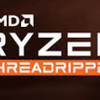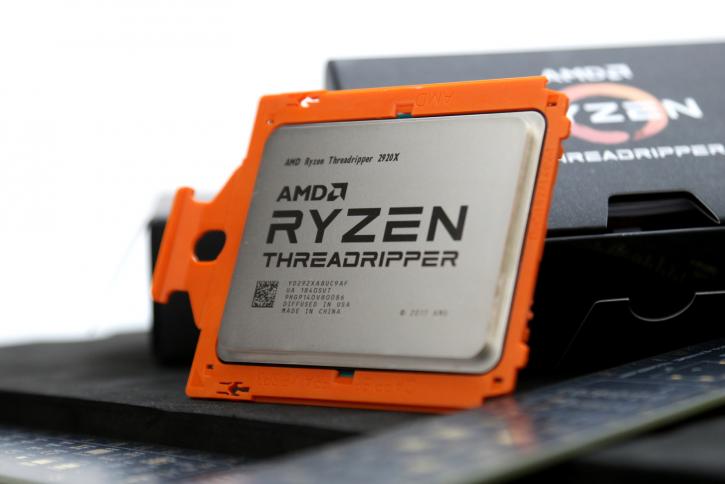Conclusion
Final Words
AMD once again presents a many-core solution for your threading needs. This round for the 2920X specific, things are more difficult as it is priced roughly at Core i9 9900K levels. AMD offers more value with an additional four cores, and in your threaded needs, that is going to make the bigger difference. However, Intel can keep up well with the 9900K at 8 cores thanks to the high clock frequencies. And also, we are simply realistic here, gaming wise in the enthusiast class graphics card domain AMD now is a good chunk behind Intel, and yeah that's all due to the more complex multi-chip design and a need for higher clock frequencies. For the 12 core parts, I doubt a little if they will be popular, I think most people will sit it out and wait on the 7nm dies next year, which should bring higher per core clock frequencies towards the entire Ryzen and Threadripper line. What I am trying to say is that threadripper likely makes the most sense once you get a 16 or more core part. Anything below that is just too close to the Ryzen 7 lineup and latest Coffee lake procs from Intel.
Performance
If the software supports 24 threads, and if you do need to create and design and have the software that likes these numbers of threads, nothing will be stopping this processor competition wise. The base clock is nice at 3.5 GHz and, if all threads are used, you'll see something like 3.7~3.9 GHz on all cores. With a few threads, that's a 4.2~4.3 GHz under the condition that you properly cool the processor. You can tweak all 12 cores to 4.1 GHz, we reached 4.2 GHz on all cores at merely a +0.250V tweak at the CPU.
We did not run into any issues. The memory compatibility and stability was truly good. If you pick your memory right, you will not have any issues as the initial Ryzen releases have already removed the launch issues. In the BIOS simply enable the XMP SPD profile and you'll boot straight into Windows with your new timings and frequency. Current memories that work on Gen2 Ryzen will work just as well on Threadripper. The new Dynamic memory toggle works well and helps to assign the best memory mode where required while switching unnoticed in the OS.
Gaming
Game performance then; at defaults, you'll be disappointed, some games will not even startup with 24 threads fired off at them. Switching towards game mode enabled six cores and twelve threads. Overall the numbers did disappoint a bit compared to what Coffee lake Gen9 is oozing out, however, it has to be said that we are using an RTX 2080 Ti, there's just no GPU limitation. We think the WX series is not about gaming, the X series a bit more and while not perfect, you'll play games fine at very decent framerates. Just not enthusiast class levels.
The Memory
We mentioned DDR4 memory a couple of times already; the latest AGESA based BIOSes have improved a lot in the past year. Threadripper fully supports 3200, even 3466 MHz, the same stuff we've been recommending for a year now. 3200 MHz is a non-issue with the right memory, we recommend 2933 MHz or better if you plan to do some gaming. Obviously, with quad-channel, you could go a little slower as you gain more bandwidth. Please do check your motherboard QVL list for recommended memory. If you do not need ECC memory, we can recommend the G.Skill FlareX memory as used, we never have any issues with it. Pop it in, enable XMP and you're up and running. Whether you like to use it in local or distributed mode, I'll leave up to you.
The Tweak
We reached 4200 MHz stable on all 12 cores with just an LCS cooler was accomplished in mere seconds of BIOS tweaking. However, the XFR2 functionality is so refined that at defaults the four 4.2~4.3 GHz bins make this the faster option overall for today's software. Yeah, that Turbo to 4.2 GHz is pretty good, however, the second you use more than 4 threads, it'll start to throttle down towards that base clock in gradual linear steps. The good thing is that if you cool this processor down well enough with, say, the LCS kit we used today, your base clock will still hover in the 3.7~3.9 GHz range thanks to XFR2. And that as well remains impressive for something with sixteen cores. As shown, manually I achieved 4200 MHz on all cores with an offset tweak of 0.250V. Be advised though, tweaking creates more heat and thus make sure you have enough cooling. We surely recommend some form of liquid cooling. Obviously, tweaking will increase your power consumption (when the PC is stressed), please do keep that in mind at all times.
The conclusion
The demographic that will be purchasing a 12-core part is small(er). See, if you are on the lookout for Threadripper, really 16 cores are the least you'd consider right? That doesn't make Threadripper 2920X less impressive though. While it might serve a small install base, the ones that do need a few more cores and threads and are on a tight budget, hey for them it can make a lot of sense. This proc is excellent for video editing with fairly high turbo bins and most software supporting up-to 16 threads. It offers good value, however, it has to be said that the 9900K from Intel will remain close thanks to the high clock frequencies. Gaming wise things are a no-brainer, the 2920X in game mode might be sufficient and very decent, however, if you pair it with an enthusiast-class graphics card team blue has the better offering. Then again, most people that build a thread ripper system will not be assembling it to play games on. AMD offers choices with Threadripper 12, 16, 24 or 32 cores with that amount doubled in threads. The platform overall remains mighty and impressive. For us though the 12-core part is a little bit in a gray zone where 'just' 8 or 16 cores somehow make more sense? For those that need a few more cores and threads for their workloads though, we can certainly recommend it.
- Sign up to receive a notice when we publish a new article
- Or go back to Guru3D's front page.



